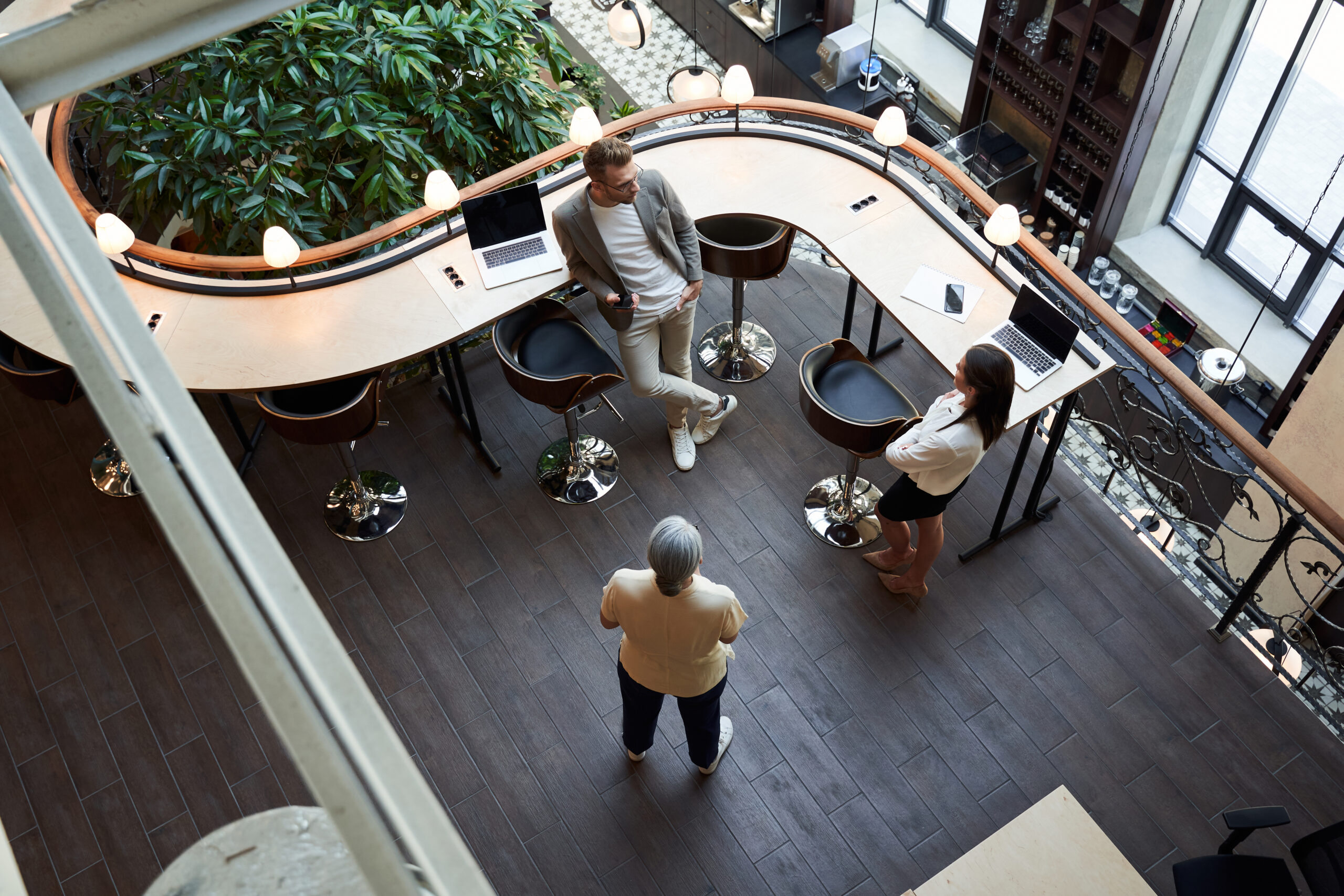In today’s dynamic and constantly evolving corporate world, the significance of modern office design and layout cannot be overstated. It has transcended mere aesthetics to become a strategic tool for enhancing productivity, nurturing collaboration, and ensuring the well-being of employees.
Modern offices have embraced a plethora of innovative trends that not only mirror a company’s unique identity but also cater to the ever-changing needs of the contemporary workforce. These trends have transformed workplaces into vibrant hubs of creativity and productivity. Modern office designs prioritize versatility and adaptability through open-plan layouts and flexible seating to foster spontaneous interactions and accommodate diverse workstyles.
Furthermore, the integration of biophilic elements, cutting-edge technology, and sustainability practices has become commonplace. Office design trends now emphasize holistic spaces, prioritizing both physical and mental well-being of employees, fostering an environment for their optimal thriving.
The Rise of Hybrid Workspaces
The COVID-19 pandemic has triggered a significant shift in work patterns, spurring the adoption of hybrid work models. Modern office design and furniture have become crucial in breaking free from traditional 9-to-5 routines, fostering adaptable workplaces. This transformation emphasizes versatile office layouts that accommodate both in-person and remote work needs.
Flexible Seating
An essential aspect of hybrid workspaces lies in their flexible seating arrangements, a cornerstone of innovative office furniture design. Employees are empowered to choose their ideal work environment, whether it’s a collaborative lounge, a peaceful corner, or a traditional desk setup.
Hot Desking
Hot desking, a flexible seating arrangement in the workplace, has surged in popularity due to its cost-effectiveness and efficient use of space. This approach permits employees to reserve desks for specific hours or days, resulting in an optimal utilization of office space.
In the contemporary professional landscape, businesses are constantly seeking ways to maximize resource efficiency while maintaining a productive work environment. Hot desking offers a compelling solution by eliminating the need for permanently assigned workstations. Instead, employees can choose a desk each day based on their schedule, tasks, or preferences, promoting a dynamic and adaptable workspace.
Biophilic Design
The integration of nature into office spaces is a thriving trend that shows no signs of slowing down.
Biophilic design has gained traction by seamlessly integrating natural elements like plants, abundant natural light, and calming water features into the workplace. This approach enhances the overall workspace environment and fosters a connection to nature, benefiting employee well-being and productivity. Biophilic design is an innovative approach that acknowledges this inherent human affinity for the natural world. By infusing workspaces with elements from nature, it aims to enhance well-being, productivity, and overall satisfaction among employees.
Plants, for instance, play a pivotal role in biophilic design. Natural elements enhance aesthetics and improve air quality, creating a healthier workspace. Maximized natural light reduces energy use and uplifts mood, promoting better sleep patterns for enhanced productivity.
Embracing Technology
As technology continues to evolve at a rapid pace, the traditional office setting has been compelled to adapt. Offices are now in the process of integrating advanced technology seamlessly into their designs. The transformation covers many aspects. It includes implementing smart office solutions to automate tasks. Additionally, IoT-connected devices are introduced, enhancing operational efficiency. The end result is a modern, tech-empowered workplace, aiding employee success in our digital world.
Smart Office Solutions
Smart office technology encompasses automated climate control, touchless entry systems, and IoT-connected devices. These features work together to create a seamless and efficient work environment.
Flexible Layouts
Traditional office configurations are fading into obsolescence, making way for a new era of adaptable and modular designs. Modern workplaces emphasize flexible layouts that can adapt to changing needs. They allow dynamic reconfigurations to cater to the contemporary workforce’s evolving demands.
Movable Furniture
The flexibility of movable furniture facilitates rapid reconfiguration of spaces, enabling seamless adaptation to various tasks and team sizes. This dynamic feature is paramount in modern workplaces, where versatility and efficiency are key to optimizing the use of available space.
Collaboration Zones
Collaboration zones are designated areas within a workspace that are specifically designed to foster teamwork and collective ideation. These zones are equipped with specialized tools and furniture, carefully chosen and arranged to facilitate brainstorming sessions and encourage fruitful group discussions.
The purpose of these collaboration zones is to create an environment that inspires and supports collaboration among team members. The furniture in these areas is often arranged to promote face-to-face interaction, making it easier for individuals to share ideas, exchange feedback, and work together towards common goals.
Key features of collaboration zones often include movable or modular furniture. This furniture can be rearranged to suit different group sizes and project requirements. The adaptability ensures customization for various collaborative activities, ranging from casual team catch-ups to more formal brainstorming sessions.
Wellness-Centric Spaces
Businesses are increasingly acknowledging the pivotal role that employee well-being plays in their success. This realization has led to a surge in investments in office designs centered around employee wellness. Forward-thinking companies prioritize mental and physical health in their environments. They integrate meditation rooms and fitness areas, enhancing overall productivity. These wellness-centric spaces boost morale and benefit both employees and organizations.
Meditation Rooms
Meditation rooms offer employees a serene and peaceful space to unwind and alleviate stress during the workday. These designated areas are designed to provide a haven of tranquility amidst the demands of the workplace.
Typically, these rooms are equipped with comfortable seating, soft lighting, calming colors, and soothing décor to create a relaxing ambiance. Some may have meditation cushions, yoga mats, or props to aid in various relaxation techniques. The goal is to allow employees to disconnect temporarily from their daily responsibilities, promoting mental clarity and a sense of calm.
Fitness Areas
On-site fitness areas are dedicated spaces within the workplace that encourage and facilitate physical well-being by providing employees with the opportunity to integrate exercise into their daily routines. These areas are equipped with exercise facilities, equipment, and amenities to support various forms of physical activity.
The fitness facilities within these areas typically include a range of equipment such as cardio machines, weights, yoga mats, and sometimes even group exercise spaces. Additionally, there might be showers, changing rooms, and wellness amenities to enhance the overall experience.
Sustainable Office Design
Sustainability has transitioned from being a mere choice to an imperative for offices today. In response, workplaces are increasingly embracing environmentally conscious designs and practices. These initiatives span a spectrum of eco-friendly measures, from energy-efficient lighting and HVAC systems to the incorporation of recycled materials in construction and furnishings. This eco-conscious approach not only aligns with global efforts to reduce our carbon footprint but also underscores the commitment of businesses to creating greener, more sustainable work environments.
Energy Efficiency
The implementation of energy-efficient lighting, HVAC (Heating, Ventilation, and Air Conditioning) systems, and the utilization of renewable energy sources are instrumental in minimizing the environmental impact of office spaces.
Energy-efficient lighting solutions, such as LED (Light Emitting Diode) fixtures, consume significantly less electricity than traditional lighting options, thus reducing energy consumption and lowering greenhouse gas emissions. They also have a longer lifespan, reducing the frequency of replacements and the associated waste.
Recycling Initiatives
Modern offices are increasingly embracing sustainability by implementing recycling programs and incorporating the use of sustainable materials in construction and furnishing.
Recycling programs within office spaces play a critical role in reducing waste and promoting responsible waste management. Offices typically designate bins for recyclable materials such as paper, plastics, glass, and metals, encouraging employees to separate waste appropriately. This initiative ensures that a significant portion of office waste is diverted from landfills and redirected towards recycling facilities, where materials can be reprocessed and reused.
In conclusion, the ever-evolving world of office designs and layouts is an exciting frontier that continues to adapt to the needs and preferences of modern workers. Embracing hybrid workspaces, incorporating biophilic elements, integrating technology, and prioritizing employee well-being are some of the key trends that define the future of office design. By staying ahead of these trends, companies can create workspaces that inspire, motivate, and ultimately drive success.
FAQs:
Q. How can biophilic design benefit employees?
Biophilic design can benefit employees by reducing stress, increasing creativity, and improving air quality, ultimately enhancing their overall well-being.
Q. What is hot desking, and how does it work?
Hot desking is a flexible seating arrangement where employees can reserve desks on a daily or hourly basis, optimizing office space and accommodating different work styles.
Q. What are some examples of smart office solutions?
Smart office solutions include automated climate control, touchless entry systems, and IoT-connected devices that enhance office efficiency and convenience.
Q. Why is sustainability important in office design?
Sustainability in office design is crucial to reduce the environmental impact of workplaces, conserve resources, and create a healthier planet.
Q. How can companies implement flexible layouts in their offices?
Companies can implement flexible layouts by using movable furniture and creating collaboration zones that can be easily reconfigured to meet different needs.

